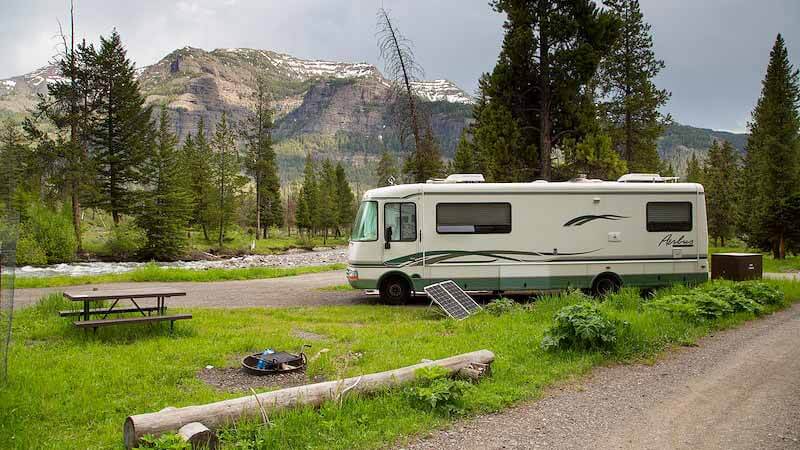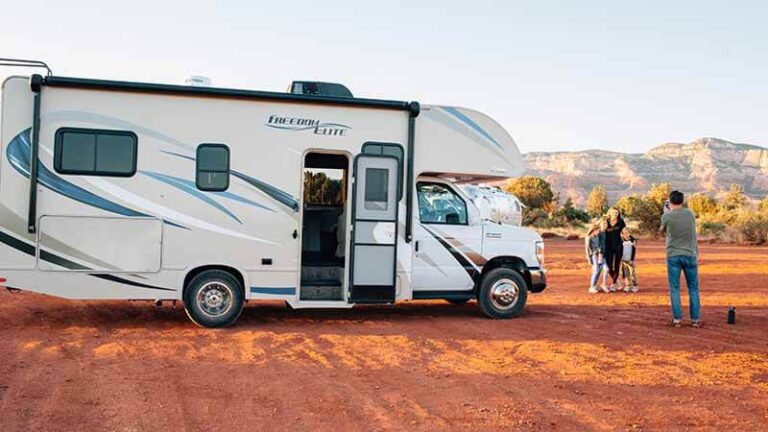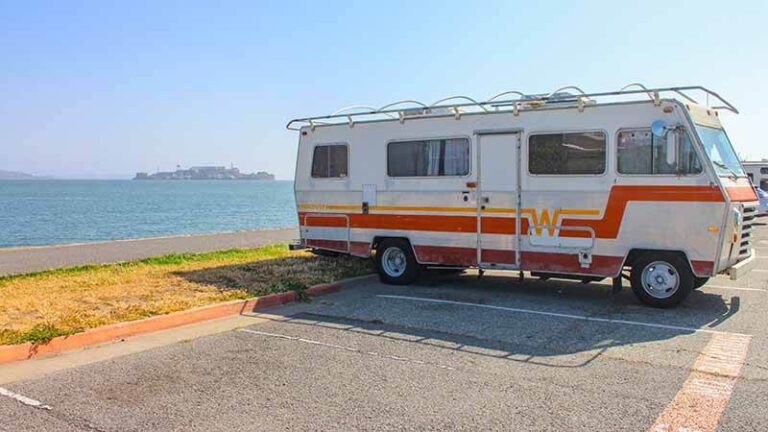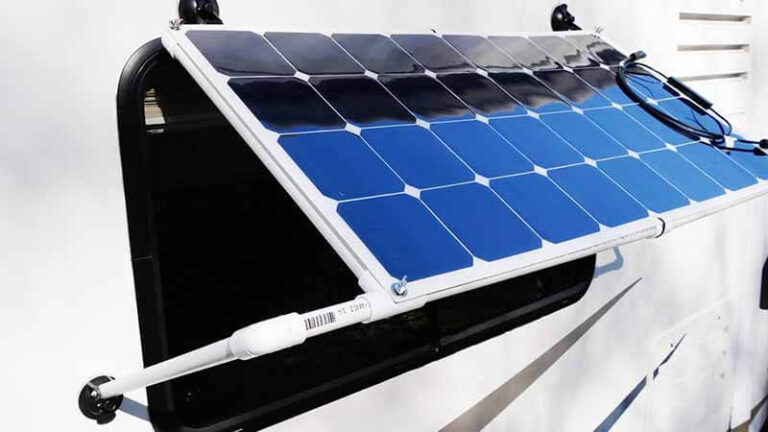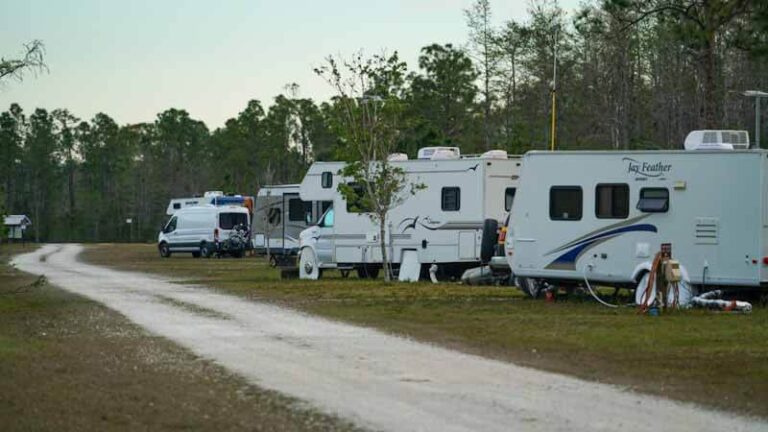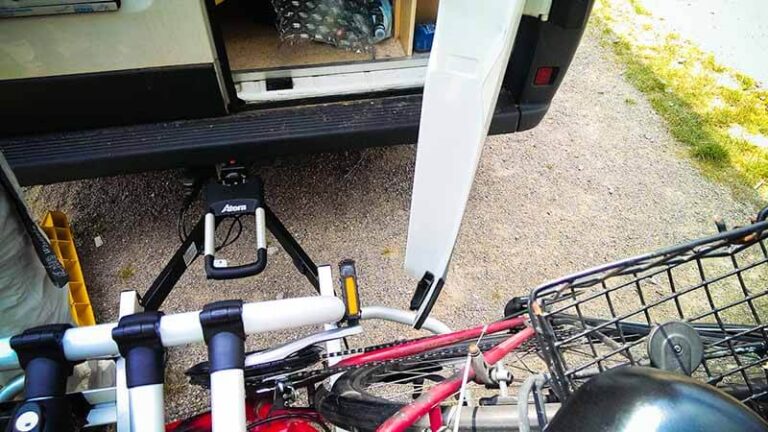RV Safety Tips: How to Stay Safe on the Road and at the Campground
RV (Recreational Vehicle) safety is critical for anyone embarking on a road trip or camping experience. RVs are essentially mobile houses, and they, like any other vehicle, have their own set of safety concerns.
RV safety is critical since it immediately affects the well-being of everyone on board, from the driver and passengers to fellow travelers on the road and even those at the campsite.
When driving an RV, you’re not only navigating the roadways; you’re also in charge of a large and hefty vehicle that demands careful handling. Any breakdown in safety procedures might result in accidents, injuries, or even death. RVs frequently transport costly personal belongings, and the safety of such assets is also at issue.
RV accidents can sometimes have far-reaching implications. They can cause property damage, costly repairs, legal troubles, and, most importantly, destruction to people’s lives.
Understanding and following RV safety procedures reduces the dangers connected with road travel and campground stays, resulting in a safer and more pleasurable experience for yourself, your family, and other travelers.
Preparing for the Road
RV Maintenance
Maintaining your RV is the cornerstone of worry-free travel. Regular inspections are required to ensure that all systems and components are in good operating order.
This includes inspecting the engine, transmission, and all mechanical components, as well as the inside and exterior of the RV. Regular inspections can assist in identifying possible concerns before they become major difficulties on the road.
Tires and brakes require special maintenance. Tire care, including checking tire pressure and tread depth, is critical to avoiding blowouts and maintaining steady handling. Brakes should be tested and serviced on a regular basis to provide efficient stopping power, especially with the increased weight of an RV.
It is also critical to monitor fluid levels such as engine oil, coolant, transmission fluid, and brake fluid. Low or polluted fluids can cause engine overheating or brake failure, resulting in dangerous driving circumstances.
Weight Distribution
Properly packing your RV is important for both convenience and safety. Maintaining an even and balanced weight distribution within your RV is crucial for stability and handling. Uneven weight distribution can cause swaying, loss of control, and an increased risk of accidents, especially during turns or in bad weather.
It is critical to follow the manufacturer’s weight distribution instructions and not exceed the RV’s weight limits. Tire blowouts, suspension damage, and impaired braking effectiveness can all result from overloading. By packing your RV carefully and evenly, you can considerably improve its roadworthiness and safety.
Safety Equipment
Preparation begins with equipping your RV with the necessary safety devices. Fire extinguishers should be easily accessible and inspected on a regular basis to ensure they are in good operating order. In the event of a fire, having a working fire extinguisher might be the difference between a minor incident and dealing with a major calamity.
Smoke and carbon monoxide detectors are critical for providing early notice in the event of a fire or the presence of toxic gases. Because they may detect hazards before they become obvious or noticeable, these gadgets are your first line of defense against hidden threats.
First aid supplies are necessary for dealing with accidents or medical situations that may arise while traveling. It should include basic medical supplies such as bandages, antiseptics, painkillers, and any prescription prescriptions that travelers may require.
Safe Driving Tips
Speed and Following Distance
It is critical for safe RV driving to maintain an optimum speed and following distance. RVs are larger and heavier than conventional vehicles, thus stopping takes more time and distance.
It is critical to obey posted speed restrictions and to alter your speed in response to road conditions, traffic, and weather. To allow for appropriate braking time, increase your following distance to at least three to four seconds.
Because of the longer stopping distance of an RV, this extra room becomes even more important.
Handling Wind and Weather Conditions
Driving in Rain
Driving an RV in the rain can be difficult owing to decreased vision, lower tire traction, and increased braking distances. Slow down, switch on your headlights, and maintain a safe distance from other vehicles.
Also, keep an eye out for hydroplaning, which occurs when your tires lose contact with the road due to water buildup. Reduce your pace even further if you come across heavy rain or standing water.
Driving in Wind
High winds can make RV driving more challenging since they can cause your vehicle to deviate from its intended path. Maintain a firm hold on the steering wheel, slow down, and stay in the center of your lane to handle the wind safely.
When passing huge trucks, be especially cautious because the wind turbulence from them can impact the stability of your RV.
Handling Fog
Fog can significantly reduce vision, making RV travel dangerous. If your RV has them, use low-beam headlights (not high beams) and fog lights. Reduce your speed slightly, use your hazard lights when visibility is severely low, and obey all road markings as well as any reflecting guideposts or signs.
Sharing the Road with Other Vehicles
Semis and Large Trucks
Driving beside semis and huge trucks necessitates caution and attentiveness. Be aware of their blind areas, which are larger in huge trucks. When passing, avoid loitering in these blind spots and give them plenty of room.
When overtaking or being overtaken by large vehicles, maintain a steady pace to reduce turbulence and increase stability.
Bicycles and Pedestrians
When driving near locations with bikers and pedestrians, such as campgrounds or recreational areas, be especially cautious. Slow down, give lots of room when passing, and always give pedestrians the right of way in crosswalks.
Prepare for sudden stops or movements from bikers and pedestrians, especially if you’re driving through a campsite or a residential neighborhood.
Nighttime Driving Precautions
Driving an RV at night necessitates extra measures. Check that all of your RV’s external lights are working properly so that other vehicles can see them. Reduce your speed as visibility deteriorates and wildlife activity increases. To avoid blinding other cars, avoid using high lights when approaching or following them.
Proper Braking Techniques
Because of their size and weight, RVs have a greater braking distance, so good braking tactics are required. Apply the brakes gently and prevent abrupt or harsh stops, which can cause skidding or loss of control. If your RV includes trailer brakes, use the trailer brake controller to help distribute braking power evenly.
Navigating Hills and Curves
Downshift to a lower gear when driving on steep or bumpy terrain to assist in regulating your speed and keep your brakes from burning. To maintain control and avoid oversteering, slow down before entering curves. Downhill descents can be aided by engine braking and downshifting.
By following these safe driving recommendations while driving an RV, you may improve your road safety, lower your risk of an accident, and ensure a smoother and more pleasurable voyage for yourself and other road users. A successful and incident-free trip requires safe RV driving habits.
Accident Prevention
Defensive Driving
Defensive driving is an important skill for RV owners to have in order to avoid accidents on the road. It entails being proactive and observant in order to foresee potential threats and respond appropriately.
Maintaining a safe following distance, continually checking the road ahead for obstructions or erratic drivers, and being prepared for sudden stops or lane changes from other cars are all important defensive driving methods for RVs.
Avoiding aggressive driving habits such as tailgating, road rage, or excessive speeding is also part of defensive driving. RV drivers may greatly minimize the chance of accidents and create safer streets for everyone by adopting a defensive driving approach.
Avoiding Distracted Driving
Distracted driving is a common cause of accidents, and it’s particularly riskier when driving an RV due to its size and weight. RV drivers should avoid using cell phones, texting, eating, or indulging in any activity that takes their focus away from the road.
Passengers can help the driver by handling navigation, entertainment systems, and communication with the outside world, freeing up the driver’s attention to focus only on safe driving. Implementing these procedures helps to keep the driver’s focus on the road, lowering the risk of distraction-related accidents.
Proper Use of Mirrors
RVs have greater blind zones than normal vehicles, making good mirror use critical for accident avoidance. To avoid blind spots, make sure your mirrors are properly adjusted before you begin your journey.
Check your mirrors frequently, especially when changing lanes, merging onto highways, or turning. If one is available, a blind spot monitoring device can help you notice vehicles or things that are outside your range of vision.
By keeping a close eye on your mirrors, you may make more informed driving judgments and lessen the likelihood of a collision.
Parking Safely
It is critical to park your RV securely in order to avoid accidents and damage to your vehicle or others. When parking at a campground or rest stop, look for specific RV parking sites if they are available.
Check that your RV is level and stable, especially if leveling blocks or jacks are used. To prevent inadvertent movement, use parking brakes and wheel chocks.
Also, keep an eye on your slide-outs and awnings to avoid colliding with surrounding obstacles, automobiles, or trees. Securing your RV while parked improves both safety and convenience throughout your stay.
Backing Up Safely
Due to limited sight and the possibility of blind spots, backing up an RV can be difficult. Have a spotter outside the vehicle to guide you when necessary when backing up.
Use hand signals or two-way radios to efficiently communicate. If you don’t have a spotter, use your mirrors to guide you and go gently, making little adjustments as needed. Keep an eye out for obstacles, pedestrians, or other cars in your path.
Many RVs are outfitted with backup cameras, which can be extremely useful when navigating the vehicle in reverse. It is critical to practice patience and caution when backing up to avoid accidents or damage.
Dealing with Emergencies
What to Do in Case of a Breakdown
Emergency Contact Information
Having access to critical emergency contact information is critical in the event of an RV breakdown. Before you hit the road, make a list of crucial phone numbers, such as your RV insurance provider, roadside help service, local towing businesses, and RV repair shops.
Distribute this list to all passengers and maintain a paper copy in the RV where it may be easily accessed. Additionally, make sure your phone is charged and has signal reception in order to make emergency calls.
Roadside Assistance
RV owners should strongly consider subscribing to a reputable roadside support program. These services can be quite helpful during breakdowns, flat tires, or technical troubles.
They often provide services such as towing, tire replacement, gasoline delivery, and even locksmithing. To guarantee a timely and efficient response in the event of an emergency, become familiar with the basics of your roadside assistance package, including coverage limits and response timeframes.
Handling a Tire Blowout
A tire rupture can be frightening, but understanding how to respond is critical for safety. Maintain a firm grip on the steering wheel and avoid rapid braking or sharp steering maneuvers when a tire blows out.
Maintain a straight trajectory while gradually easing off the accelerator. Once you’ve regained control of the RV, gradually slow down and pull over to a safe spot away from traffic.
To do so safely, replace the damaged tire or contact for roadside help. To limit the possibility of blowouts and to ensure safe travels, inspect and repair your RV’s tires on a regular basis.
RV Fire Safety
Because of the limited space and flammable items within the vehicle, RV fires can be very dangerous. Proper maintenance, including frequent checks of electrical systems, appliances, and propane systems, is the first step in preventing fires.
Check that smoke detectors and carbon monoxide detectors are working properly and have new batteries. In the event of a fire, safety comes first. Evacuate all occupants from the RV immediately and call 911.
If you have a fire extinguisher, use it only if it is safe to do so and you are educated in its use. When dealing with flames in an RV, however, personal safety should always come first.
Evacuation Plans
Having an evacuation plan in place is part of being prepared for crises. Discuss and practice evacuation protocols with all passengers, stressing key exit routes as well as alternate escape routes in the event that the principal exits are closed.
Establish a meeting place outside the RV to guarantee that everyone is present in the case of an evacuation. Also, know where the campground exits are and keep a map or GPS gadget nearby to help you navigate to safety in unfamiliar locations.
Being well-prepared and being calm in the face of an emergency can have a big impact on the outcome and safety of all RV occupants.
Preventing Theft
Securing Your RV
It is critical to secure your RV in order to prevent theft and protect your things. Begin by purchasing high-quality locks for all entry points, such as doors, windows, and storage compartments.
Ensure that all locks are in good working order and that they are inspected on a regular basis for signs of wear or tampering. To dissuade criminals, consider installing additional security measures such as deadbolt locks or hitch locks.
Choose well-lit and secure parking areas for your RV. If you’re staying at a campground or RV park, ask about their security precautions and choose sites with adequate lighting and visibility.
When you’re out at home, keep your drapes or blinds closed to prevent potential burglars from seeing your belongings. Inside, employ safes or hidden compartments to safely store critical documents, jewelry, and other valuable objects.
Personal Security
Personal safety is also essential while RVing. Be aware of your surroundings and neighbors, and keep an eye out for any unusual activities. Learn about your fellow campers and develop a sense of communal vigilance. Displaying expensive objects, such as fancy grills or bicycles, outside your RV can draw unwelcome attention.
When you’re not in your RV, keep your personal possessions safe. Passports, wallets, and gadgets should be stored in secure containers or safes. Even if you’re only going to be gone for a few minutes, don’t leave valuables unattended. When leaving your RV, secure all doors and windows and activate any security alarms or systems.
Campground Safety Measures
While most campgrounds are safe locations to stay, adopting extra steps can improve your safety. Before selecting a campground, read reviews and check online forums for input on the security of the park.
Campgrounds with sufficient illumination, security patrols, and secure entry and departure points are preferable. When you arrive at a campground, become acquainted with the layout and locations of emergency services.
Consider adding motion-activated lights outside your RV if you are concerned about security. Illuminating the area surrounding your RV at night can prevent prospective burglars.
Report any suspicious activities to campsite management or local police to be a good neighbor. Staying aware and proactive about your own and your fellow campers’ safety will contribute to a more secure and happy RV trip.
Safety at the Campground
Campsite Selection
Choosing the correct campsite is critical for assuring your safety while camping. Consider elements such as level terrain, sufficient drainage to minimize flooding, and proximity to services such as restrooms and water sources while selecting a campground.
Keep an eye out for potential risks like overhanging branches or uneven terrain. Set your camp away from dead or sick trees that could pose a hazard during windy winds. To retain privacy and avoid overpopulation, look for sites with enough space between RVs or tents.
Electrical and Water Hookups
Prioritize safety when connecting to electrical and water hookups at a campground. To avoid electrical problems, make sure your RV’s electrical system is in good operating order and install suitable surge protectors and adapters.
To avoid harming your RV’s plumbing, inspect hoses and connections for leaks and use a water pressure regulator when utilizing water hookups. To avoid the danger of accidents or damage, always switch off and disconnect utilities before leaving your campground or before going to night.
Campfire Safety
If your campground allows campfires, strictly adhere to the safety standards to avoid flames and injuries. Never leave a fire unattended in specified fire rings or pits.
Keep a safe distance between the fire and your RV or tent to avoid harm from sparks or embers. In case of an emergency, keep a bucket of water and a fire extinguisher nearby.
Avoid burning rubbish or processed wood, which can emit harmful vapors, and instead use only certified firewood. Finally, completely extinguish the fire before leaving or going to bed to prevent it from rekindling.
Interactions with Fellow Campers
Respectful interactions with fellow campers help to create a peaceful and safe camping experience. Maintain a reasonable noise level, especially during the campground’s designated quiet hours.
To avoid confrontations with other campers and wildlife, keep pets under control and respect leash laws. Follow campground laws and decorum, and be nice and thoughtful of your neighbors.
If you have a disagreement with another camper, try to handle it gently and diplomatically. Seek assistance from campsite management or authorities if confrontations persist or worsen.
Wildlife Encounters
Because many campgrounds are located in natural areas, you may see wildlife throughout your stay. Wildlife safety is critical for protecting yourself, your goods, and the animals themselves.
Maintain a safe distance from wildlife and never approach or feed it. To avoid attracting wildlife to your campground, keep all food, waste, and aromatic things in animal-proof containers.
When hiking or exploring in the area, be cautious and observe any posted instructions or warnings about specific fauna, such as bears or snakes. Understanding and respecting the local wildlife will secure your safety as well as the preservation of the natural environment.
Conclusion
To summarize, going on an RV journey is an exciting and gratifying experience, but it comes with the duty of protecting your own and others’ safety.
Taking proactive precautions to mitigate dangers is critical from the moment you prepare for the road until your stay at the campground.
In this blog post, we’ve covered a wide range of RV safety advice, including anything from vehicle maintenance and safe driving habits to accident prevention, handling emergencies, and park security.
You may dramatically lessen the likelihood of accidents, mishaps, and unexpected surprises during your RV travels by following these principles and adopting a safety-first approach.
Remember that safety is an ongoing process. Review and update your safety protocols on a regular basis, stay up to date on new RV technologies and safety advancements, and share your knowledge with other RV enthusiasts.
You will not only be able to enjoy your RV trips with more peace of mind, but you will also be contributing to the overall safety and happiness of the RVing community.
So, as you set out on your next adventure in your mobile home, may it be filled with amazing memories, breathtaking sights, and the utmost safety. Travel safely, fellow RV enthusiasts!

